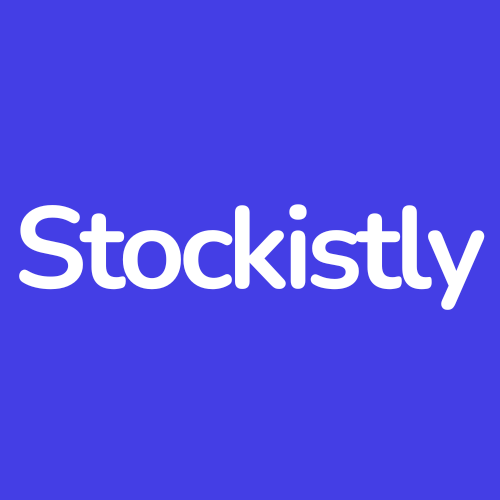
ShipBob
An omni-fulfillment platform with a global network of 40+ fulfillment centers throughout the US, Canada, UK, EU, and Australia
Customers
Founded
Company Size
App Installs
App Reviews
Average Rating
What is {listing}?
ShipBob is an omni-fulfillment platform with a global network of 40+ fulfillment centers throughout the US, Canada, UK, EU, and Australia.
ShipBob's fulfillment solutions include fully outsourced fulfillment and/or a standalone warehouse management system (WMS) for brands with their own warehouse.
All solutions include:
- A fulfillment dashboard that provides real-time inventory levels, reorder point notifications, product bundling, the ability to edit orders in bulk, advanced reporting and analytics, and much more
- EDI-compliant B2B fulfillment to expand beyond your primary storefront and onto the biggest retailer websites, marketplaces, and brick-and-mortar locations- 2-day shipping for any eCommerce platform across 100% of the continental US from even 1 fulfillment center, along with 2-day shipping badging and estimated delivery dates on Shopify product pages
- Access to 40+ turnkey integrations in the ShipBob App Store to connect your tech stack, plus a robust Developer API
- Delivered Duty Paid (DDP) shipping for international orders - Carbon-neutral shipping
- Customization capabilities like kitting, branded packaging, gift cards printed at pack, inserts, and more
ShipBob Pricing is truly custom per merchant, depending on your products and shipping needs. ShipBob's pricing incorporates standard fees for receiving inventory, warehousing products, and shipping each order (which varies depending on weight, dimensions, destination, and more). Please connect with their team to get a pricing quote.
ShipBob is an omni-fulfillment platform with a global network of 40+ fulfillment centers throughout the US, Canada, UK, EU, and Australia.
What makes {listing} different than competitors?
For me, it's the 2 day and even same day shipping that they provide. ShipBob is a well-funded and fast growing 3PL network and software platform. They're expanding their warehouse locations, they are continuously improving their already robust software suite, and they just have your back when it comes to logistics and supply chain management. I'm not always a hHaving over 40 fulfillment centers makes ShipBob one of the leaders in distributed 3PLs. This also enables brands to get products to their customers faster by splitting inventory across locations to reduce time in transit. They also have an end-to-end managed freight program called FreightBob with exclusive access to dedicated ShipBob trade lanes for brands shipping inventory from China to the US.
ShipBob has a tech-enabled fulfillment platform complete with a proprietary warehouse management system (WMS) used in all of its fulfillment centers across the globe. Their platform feeds you real-time data for better visibility into orders and inventory. ShipBob works across all of your sales channels and connect to 70+ retailers to fulfill both B2B and DTC under one roof with EDI (Electronic Data Interchange)-compliant solutions.
ShipBob has over 40+ key integrations with leading tools across the eCommerce landscape.
ShipBob's Customization Suite lets you personalize the unboxing experience with branded packaging, custom gift notes, inserts, and more.
What metrics is {listing} going to improve for my eCommerce store?
ShipBob enhances eCommerce metrics by optimizing fulfillment and logistics. It improves delivery speed, order accuracy, and inventory management. By reducing shipping times and costs, ShipBob increases customer satisfaction and retention. The platform's real-time analytics offer insights into operational efficiency, helping boost sales, streamline operations, and support business scalability.
Who has to manage {listing} and how long does it take to setup?
It usually takes about 2-4 weeks to get your inventory into ShipBob's fulfillment center(s) and complete onboarding (unless you have complex needs such as a custom Enterprise Resource Planning (ERP) integration, which takes slightly longer), but some merchants have completed onboarding in as fast as 7 days. For small companies, usually the owner or Founder will be involved on these calls. For larger companies, the Chief Operating Officer (COO) or Operations Manager will often set up and maintain the relationship with ShipBob, though ShipBob's software has free unlimited users.
An Implementation specialist will be assigned to your account to help you navigate the onboarding process. This individual will help you set up your ShipBob dashboard, lead training sessions tailored to your brand and your needs, and create materials specifically for you. Additionally, your Implementation Specialist will walk you through how to integrate your store(s), set up products, and go live with shipping (whether it's virtually if you outsource fulfillment, or even in person to install our WMS in your warehouse). Your Implementation Specialist will be available to educate and empower you to confidently use the ShipBob dashboard and features.
ShipBob's Merchant Care team will then be your go-to team for day-to-day support, requests, troubleshooting, and resolution. Your account will be assigned a Merchant Care pod, full of support reps who are familiar with your specific needs.
ShipBob does not have any order minimums, though clearly larger brands benefit the most through the ability to distribute product across their warehouse network.
For brands shipping under 400 orders/month, you can tap into their Growth Plan, a self-service onboarding program designed to help pre-launch brands or startups grow their business by outsourcing fulfillment without giving up control.
Is {listing} right for my store?
There are 2 primary types of merchants that can benefit from ShipBob:
- Any brand that wants to outsource fulfillment, from small startups to mid-market/enterprise brands shipping half a million orders/month.
- Any brand that has their own warehouse in the US (generally between 4,000 and 50,000 square feet) and wants to improve their fulfillment strategy, inventory management, picking processes, warehouse organization, and more through ShipBob's Merchant Plus (WMS).For either of these, fulfilling orders for nearly any eCommerce platform works with ShipBob as well as custom carts for tech-savvy brands that want to build an integration using ShipBob's Developer API (in addition to DTC marketplaces and B2B fulfillment).
Roughly 25% of ShipBob's customers are in the beauty and personal care space, 22% sell nutrition and health products, 11% are in apparel and accessories, with the rest being a mix of many other industries.
ShipBob is a great option for brands looking to not just grow but scale. From partnerships with top retailers and marketplaces to integrations with the leading technology eCommerce experts, merchants can easily expand their online presence into physical storefronts. This also makes ShipBob a great option for brands looking to expand internationally. With warehouses in the US, Canada, the UK, Europe, and Australia, as well as cross-border solutions like DDP shipping and partnerships with local tax authorities, they have the tools you need to get started in new markets.
ShipBob is not for dropshippers or anyone else that doesn't have to directly (or through an existing 3PL) ship and manage their inventory. ShipBob is not for digital product sellers, SaaS, or other non-physical goods providers.
The types of orders ShipBob cannot fill include alcohol, refrigerated products, perishables, very large and heavy products (e.g., furniture and mattresses), and carrier-prohibited products. ShipBob works best for lower-SKU count merchants that turn inventory over quickly, though ShipBob can cater to a mix of products and SKU lines.
Sustainability status
See {listing} in Action
Integrations
Features
- Same Day Shipping
- Kitting
- Product Bundles
- Direct To Consumer Dtc Shipping
- B2B Wholesale
- Delivered Duty Paid Ddp
- 2 Day Shipping
- Advanced Analytics Reporting
{listing} Pricing
Contact Sales
- Onboarding Services
- Software Integrations
- Discounted Shipping rates
- Same Day Shipping
- World Class Support, Reporting & Analysis
- Returns, Inventory & Order Management
- Direct-to-Consumer (DTC) Shipping
- B2B Wholesale
- International Shipping
- Delivered Duty Paid (DDP)
- 2-day shipping
- Kitting
- Product Bundles
- Advanced Analytics & Reporting
- Order Fulfillment
- Warehouse Management
We do our best to keep pricing information up to date, but please do check the software partner's own website for the most up to date pricing information.
{listing} Alternatives

An eCommerce back-in-stock & pre-order alerts tool that adds a “Notify me” button, captures demand, and automatically messages shoppers via email/SMS when products return—recovering sales on autopilot.

Back-in-stock alerts for Shopify that capture waitlists and automatically notify customers via email, SMS, Messenger, and web push to recover lost eCommerce sales.

A back-in-stock notifications app for Shopify that captures waitlists and automatically alerts customers via email/SMS when items are restocked to recover lost eCommerce sales.

Supercharge your eCommerce growth with an all-in-one AI platform for smarter sales, seamless insights, and effortless optimization.

Empower your business to run smarter, faster, and more efficiently with innovative digital solutions.


